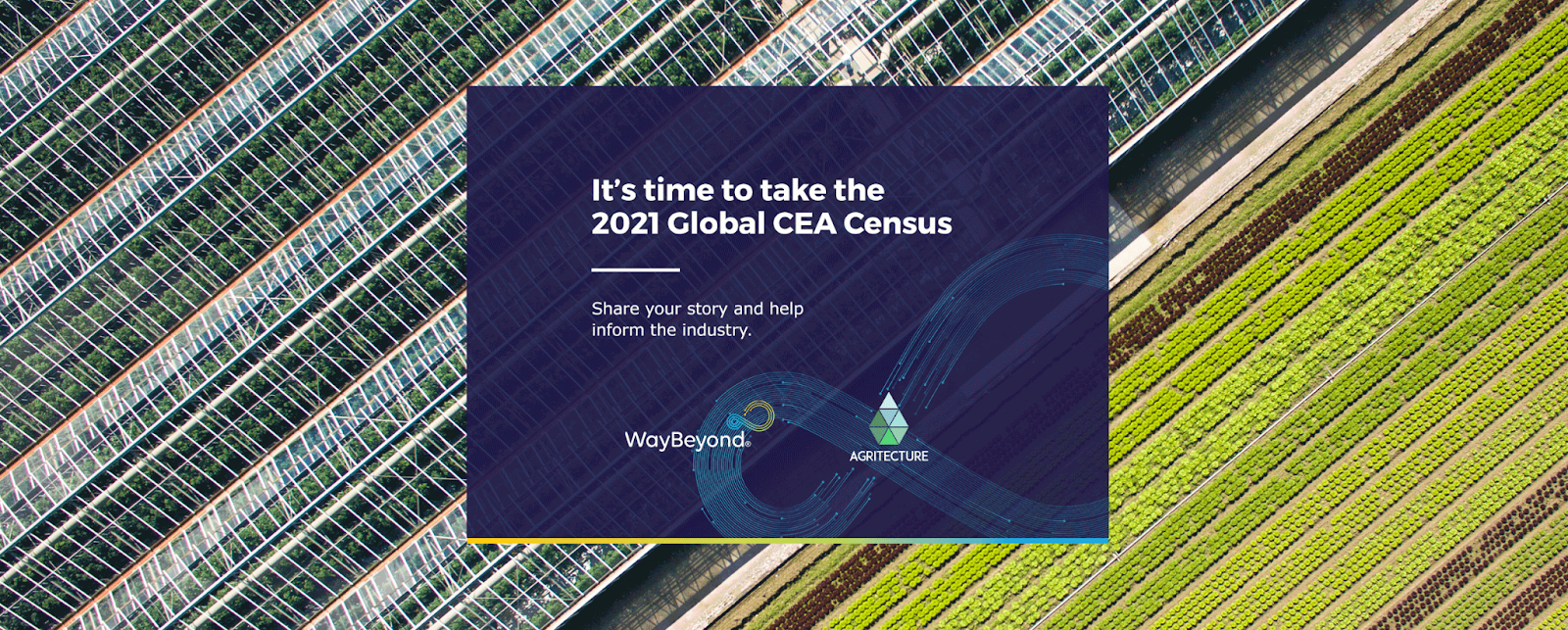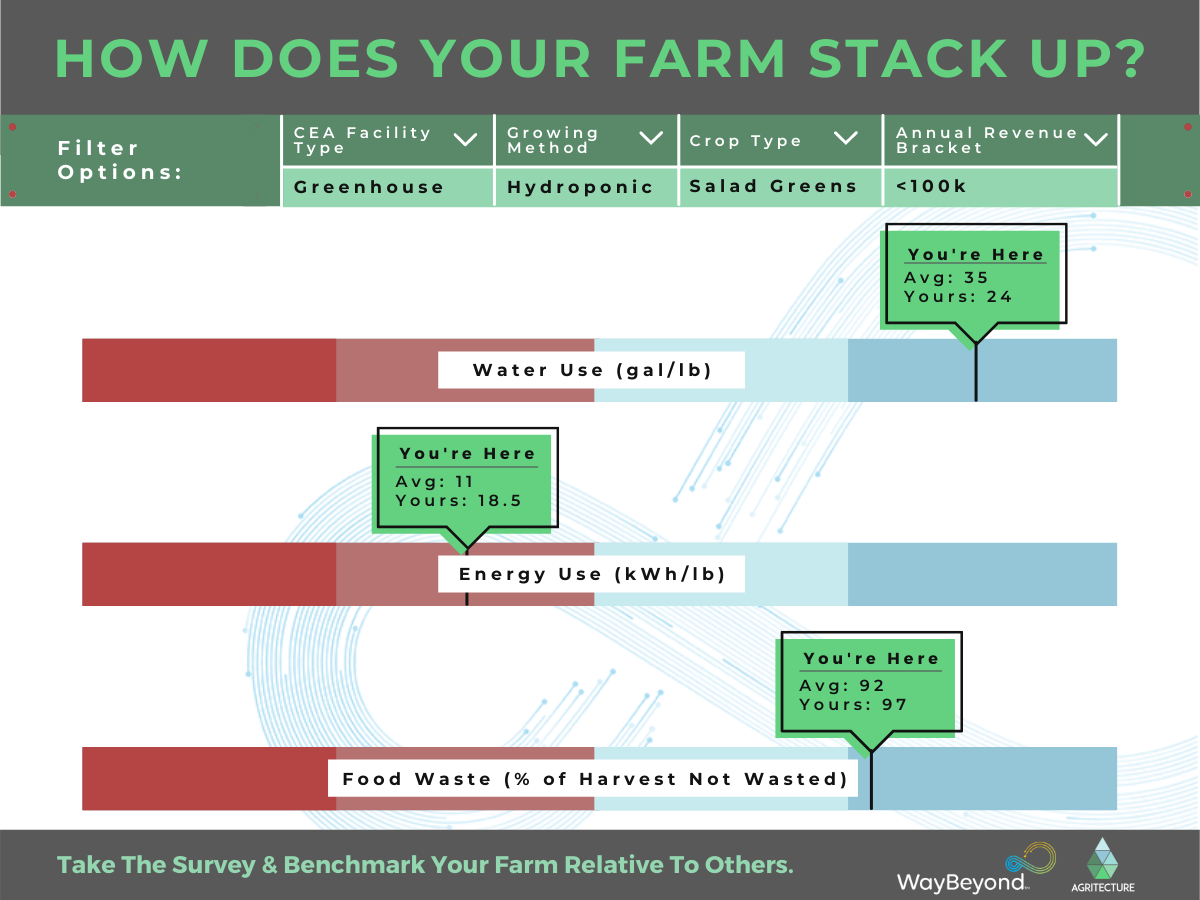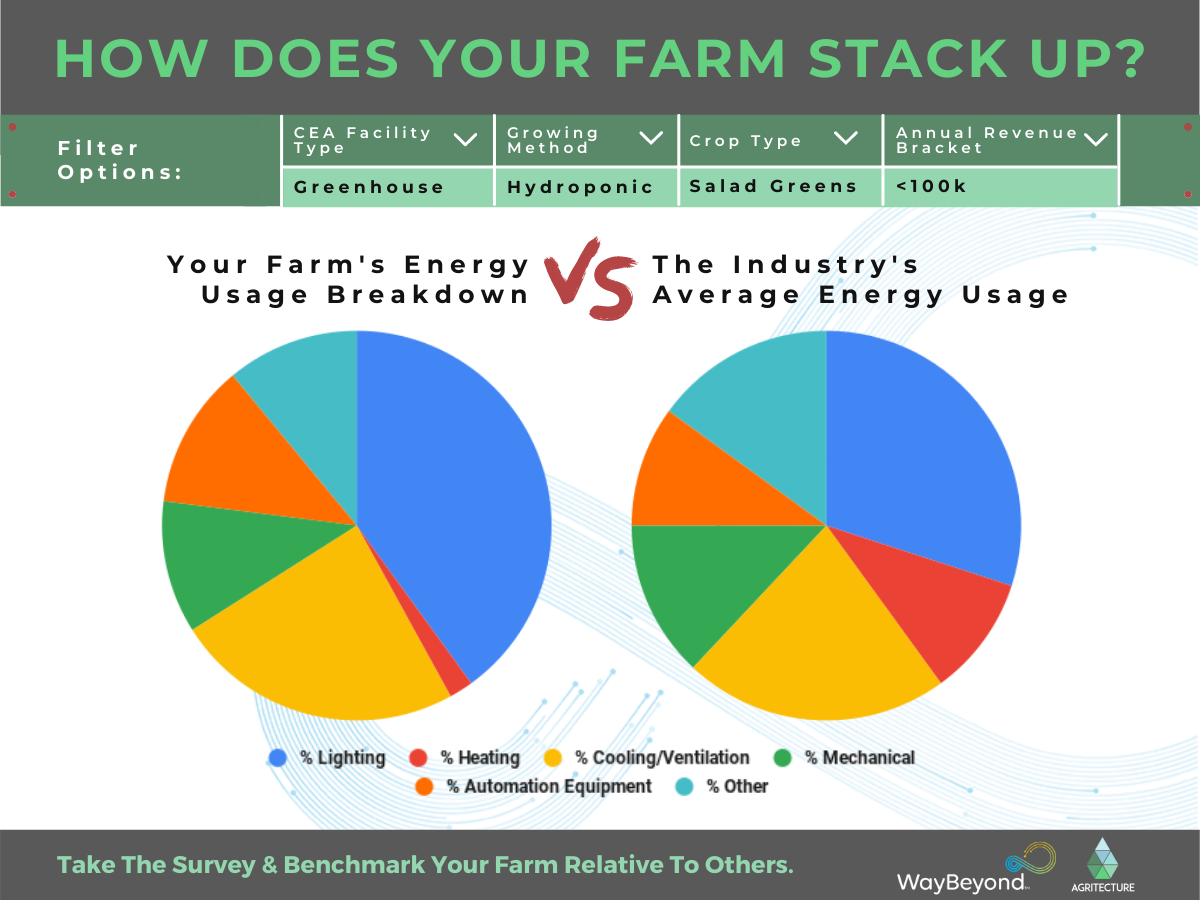Aug 9, 2021
How Agritecture Will Help Indoor Farms Benchmark Their Sustainability Metrics

We hear the term ‘sustainability’ used constantly in the Controlled Environment Agriculture (CEA) world.
CEA businesses are frequently claiming that their operations are “sustainable” because they inherently use land and water more efficiently than traditional agriculture operations. Yet, it's rare that we see tangible evidence (numbers) supporting these claims.
Plus, the tradeoffs of CEA systems are often left unaddressed.
For instance, while vertical farms can insulate agriculture from the mounting effects of climate change and reduce food miles, those that are tied to the grid for their electricity needs have high carbon footprints. Vertical farming production methods contribute more to greenhouse gas (GHG) emissions than products grown in the field, even accounting for shipping the produce long distances to most markets.
This is the primary reason why you’re likely to read articles criticizing CEA’s growth.
“We’re beginning to see a new fad in agriculture — so-called ‘vertical farms’ that grow food indoors with energy-intensive, artificial life support systems. ”
This begs the question: how sustainable is the CEA industry really?
The only way to address these criticisms and answer this overwhelming question honestly is to know where we stand today.
And for that, we need the backing of data.

Agritecture & WayBeyond recently launched the 2021 Global CEA Census to do precisely this. With a focus on growers’ perspectives on sustainability and how they measure specific ESG (environmental, social, and governance) outcomes, this Census will help us identify what the CEA industry is doing right and where it needs to step up its game.
This is the third year the Census has run with increasing participation each year from greenhouse, indoor vertical, and tunnel house growers, making it the most comprehensive global survey of CEA operations.
This Census is part of a larger effort by Agritecture to better address sustainability through transparency and data-driven tools. Past Census reports have brought forward key information on the state of the industry, tactics being used, and the people behind its many operations. Last year, in the 2020 CEA Census, we discovered that:
-
Vertical farms averaged a revenue per m2 of $116 versus greenhouses with an average of $18 per m2
-
Indoor farms that are between 5-9 years old are almost 50% more likely to be profitable than farms that are < 2 years old
-
“Friends & Family” and “Angel Investors” continue to be the most popular financing routes for CEA businesses
Here’s what respondents of both the 2019 and 2020 CEA Census have to say:
Want more reasons to take part?
Here’s what Darryn Keiller, Chief Executive Officer and Founder at WayBeyond, and Henry Gordon-Smith, Founder & CEO at Agritecture have to say to you.
Why is measuring sustainability crucial for the CEA industry?
What are Darryn & Henry’s opinions on the top vertical farms and greenhouses in the industry?
“What we’ve seen with the pandemic is a heightened awareness and sensitivity around sustainable practices in general. There’s a more pervasive awareness in the world, across different industries. Now, you’ve got big players weighing in because they understand the tangible connection with their food supply. And I think that’s because people kept running out of food in 2020. All the issues around the meat processing plants in the US, and leafy greens supply in other markets just made it so visceral and real for everybody that they’ve had to get serious about it. ”
“When it comes to CEA operators, where do they fit in this [global] sustainability strategy? One of the key issues is that there’s not a lot of data that’s available to understand the impacts of different types of CEA farms. There’s not a lot of standards related to that. And there’s also a lot of greenwashing that exists. ”
Have you always wanted to know how your farm compares to others in the industry? Well then, this is your chance!
As a bonus for participants this year, once our analysis of responses is complete, a new Agritecture Designer tool will allow growers to benchmark some of their sustainability data relative to the industry average.
Do you track your sustainability metrics? How much energy does your facility use in comparison to others? Is your water use lower or higher than other CEA farms? What does your energy usage breakdown look like in comparison to others? And, does your farm waste more or less food than others?
This is exactly the kind of information this benchmarking tool has to offer.


You can get a clear picture of how your farm's sustainability metrics compare to other farms - is there something you can be doing more of? Learn where your farm’s ahead of the curve and where you can improve!
FURTHER READING
8 Urban Farms Creating Positive Social Impact
4 Reasons Why Europe Needs More Controlled Environment Agriculture
